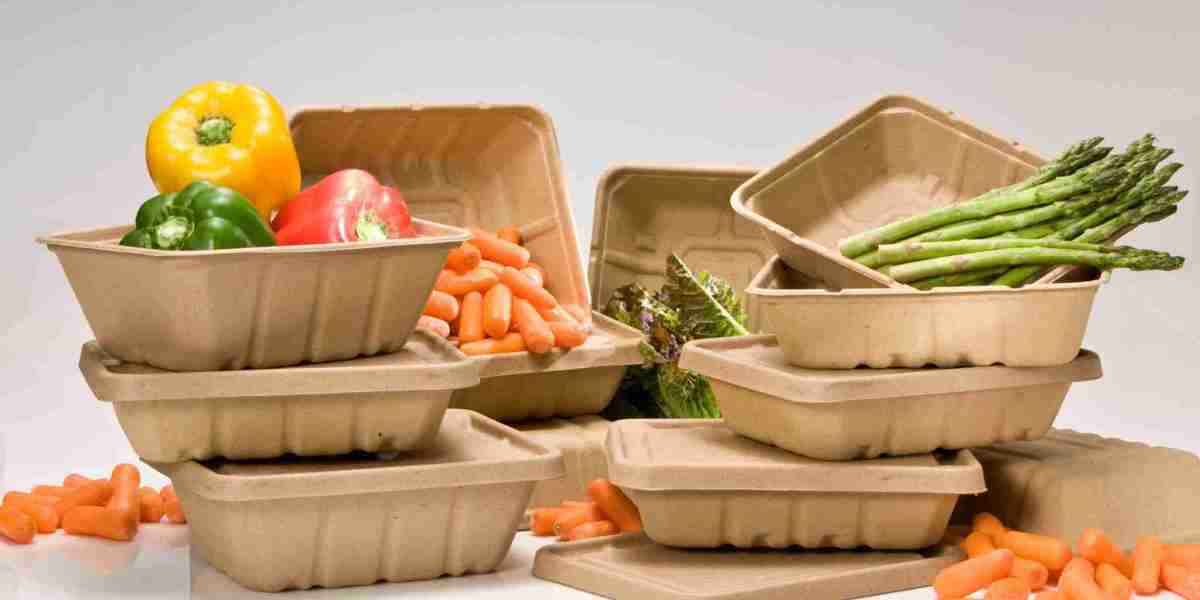Introduction
The compostable packaging market is evolving rapidly, driven by technological advancements and the growing demand for sustainable alternatives to plastic packaging. As industries and consumers push for eco-friendly solutions, companies are investing in innovative materials and production techniques to enhance the performance, affordability, and accessibility of compostable packaging. This article explores the latest emerging technologies, key breakthroughs, and future opportunities in the compostable packaging sector.
Emerging Technologies in Compostable Packaging
Several cutting-edge technologies are reshaping the compostable packaging industry:
Biodegradable Biopolymers: Advances in biopolymer technology have led to the development of new materials like polyhydroxyalkanoates (PHA) and polylactic acid (PLA), which are derived from renewable sources and fully compostable.
Nanotechnology in Packaging: Nanomaterials are being incorporated into compostable films to improve barrier properties against moisture, oxygen, and UV light, extending the shelf life of perishable products.
Smart Compostable Packaging: Some companies are developing intelligent packaging solutions embedded with sensors that monitor freshness and biodegradability status, ensuring proper end-of-life disposal.
Water-Soluble and Edible Packaging: Innovations in seaweed-based and starch-based films are making packaging that dissolves in water or can be safely consumed, reducing waste.
3D Printing with Compostable Materials: Additive manufacturing is being explored to create custom compostable packaging solutions with minimal material waste and enhanced structural integrity.
Breakthroughs in Compostable Packaging Materials
Material science innovations are at the forefront of the compostable packaging revolution. Notable breakthroughs include:
Bagasse-Based Packaging: The use of sugarcane fiber (bagasse) in food containers and packaging materials provides a strong, heat-resistant, and compostable alternative to plastic.
Mycelium-Based Packaging: Companies are harnessing fungal mycelium to create biodegradable packaging that decomposes naturally in soil within weeks.
Algae-Based Films: Algae-derived packaging solutions are gaining attention due to their rapid biodegradability and ability to replace petroleum-based plastic films.
Hemp and Bamboo Fiber Packaging: These plant-based fibers offer a sturdy, renewable, and fully compostable alternative to traditional packaging materials.
Hybrid Compostable Packaging: Some brands are combining multiple natural materials to enhance the durability and composting efficiency of their packaging products.
Challenges in Scaling Compostable Packaging Innovations
Despite these advancements, the industry faces several hurdles in bringing compostable packaging technologies to scale:
Production Costs: Many innovative compostable materials are still more expensive to produce than conventional plastics, limiting mass adoption.
Limited Composting Infrastructure: The lack of widespread industrial composting facilities hinders the effective breakdown of compostable packaging materials.
Consumer Awareness and Compliance: Consumers often struggle to differentiate between compostable and non-compostable packaging, leading to improper disposal.
Regulatory Barriers: Variations in compostability standards across regions create challenges for businesses aiming for global distribution of their sustainable packaging.
Future Opportunities and Market Growth
The future of compostable packaging is promising, with key opportunities for expansion and improvement:
Scaling Sustainable Manufacturing Processes: Increased investment in eco-friendly production methods will drive down costs and enhance accessibility.
Integration with Circular Economy Models: Companies are focusing on developing closed-loop systems where compostable packaging contributes to regenerative waste management.
Government Incentives and Regulations: Strengthening policies and financial incentives for sustainable packaging development will accelerate innovation and market growth.
Collaboration Between Stakeholders: Partnerships between packaging manufacturers, retailers, and waste management companies will ensure a seamless transition to compostable packaging solutions.
Advancements in Home Compostable Solutions: New materials designed for home composting will allow consumers to dispose of packaging waste sustainably without requiring industrial facilities.
Conclusion
The compostable packaging industry is witnessing groundbreaking innovations that are set to transform global packaging practices. While challenges remain, ongoing advancements in material science, production techniques, and regulatory support are paving the way for a more sustainable future. As technology continues to evolve, compostable packaging will play a critical role in reducing plastic pollution and promoting environmental responsibility across industries.




